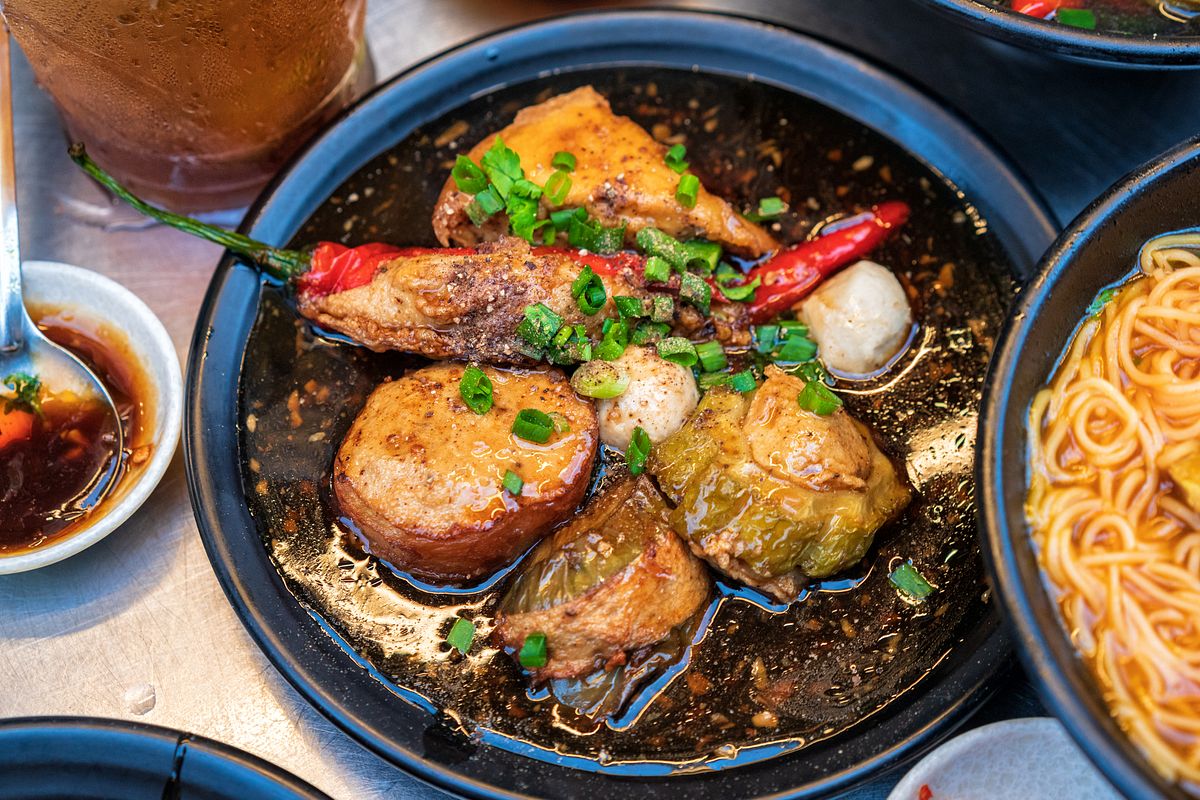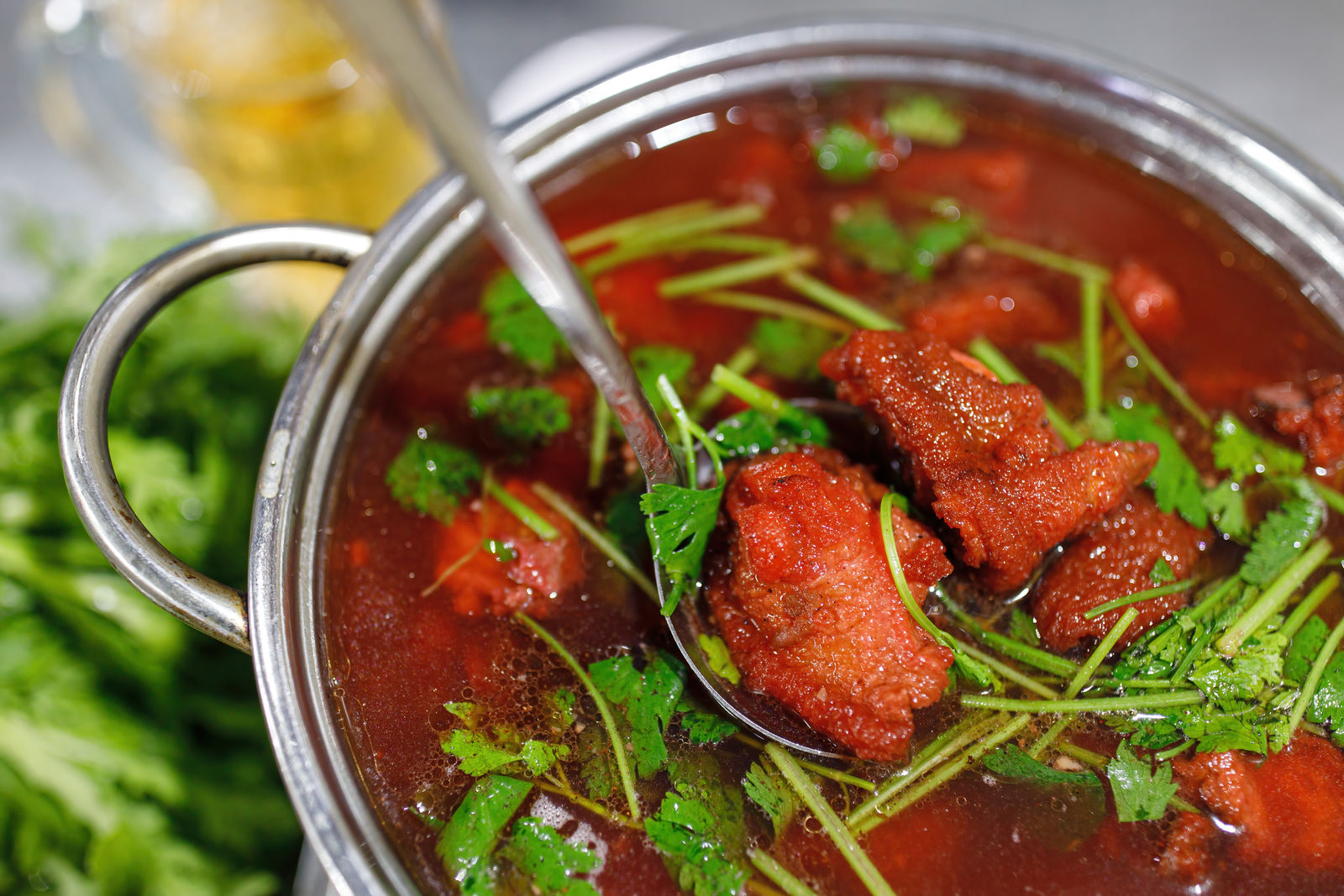Stuffing food inside other food is an ingenious human invention on par with refrigeration, chopsticks, and Gmail’s “undo” button.
Across the vast, fertile landscape that is Vietnamese cuisine, remnants of this astute mode of food creation are aplenty: stuffed bitter gourds in soup, river snails stuffed with minced pork and lemongrass, and, of course, who can discount the classic meat-stuffed tofu in sweet-and-sour tomato sauce. Cooked in pockets created by other food, the filling doesn’t dry out, and it even absorbs the flavor of whatever is holding it in, making the eating experience more nutritionally fulfilling and less one-note. This brings us to this week’s hẻm gem, khổ qua cà ớt, a member of the stuffed lineage whose manifestation is neither one-note nor simplistic, for it has roots in culinary traditions that are centuries old.

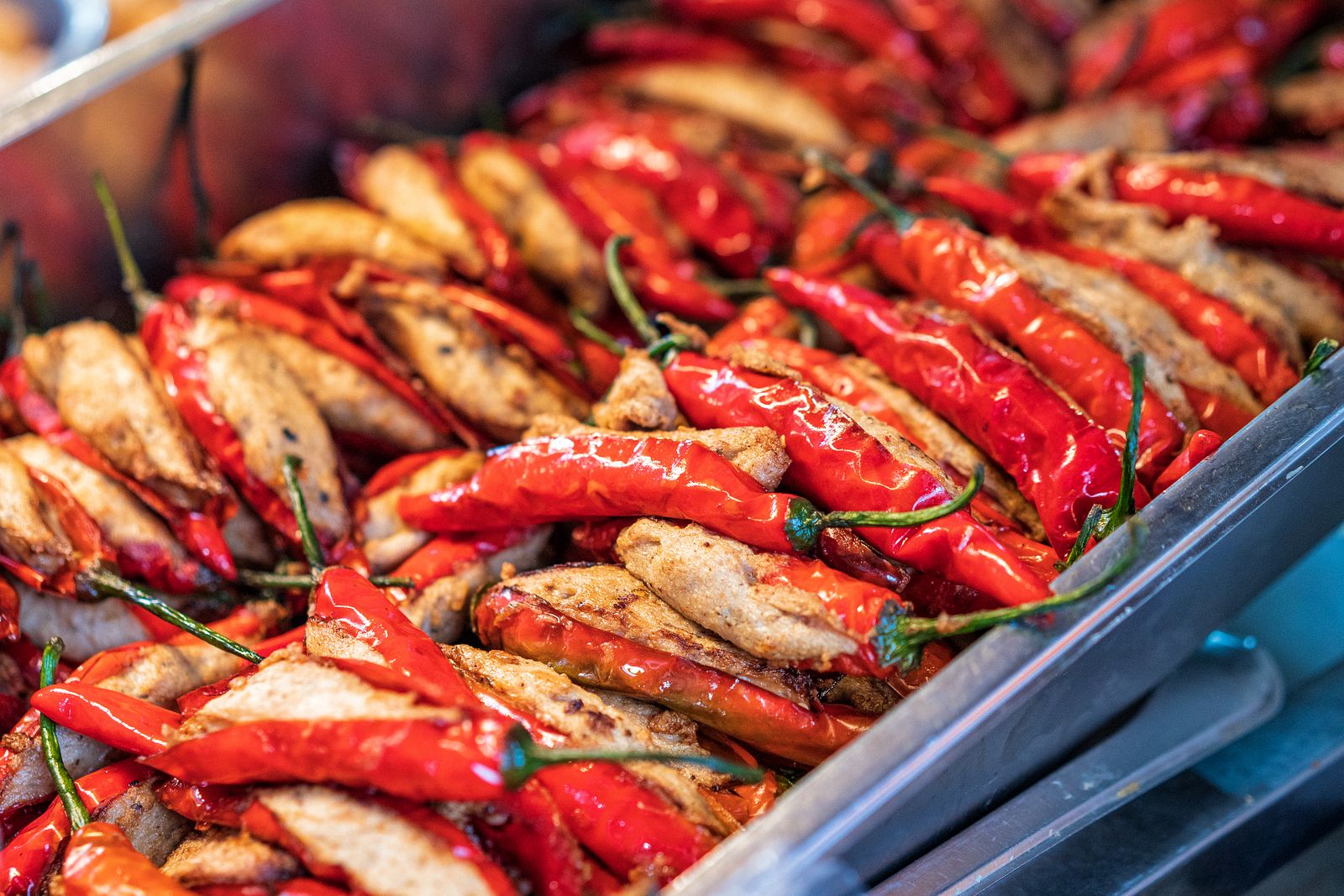
Khổ qua cà ớt, sometimes known as khổ qua lạc chiếu, might roll off the tongue very smoothly, but the name is merely a list of vegetables — bitter gourd, tomato, chili — which probably won’t help it win any popularity contest. Its highly sought-after attribute lies in what’s not mentioned: the stuffing, the pulverized flesh of a freshwater fish called cá thát lát. If cetaceans are well-known for their blubberific figures and blue-fin tunas for their swiftness, the thát lát is notable among Asian circles for being goddamn delicious, which is great for us, but unfortunate for the species. Thát lát is among the few seafood ingredients whose flesh, when deconstructed into a paste, takes on a chewiness that Asian palates consider exceedingly desirable.
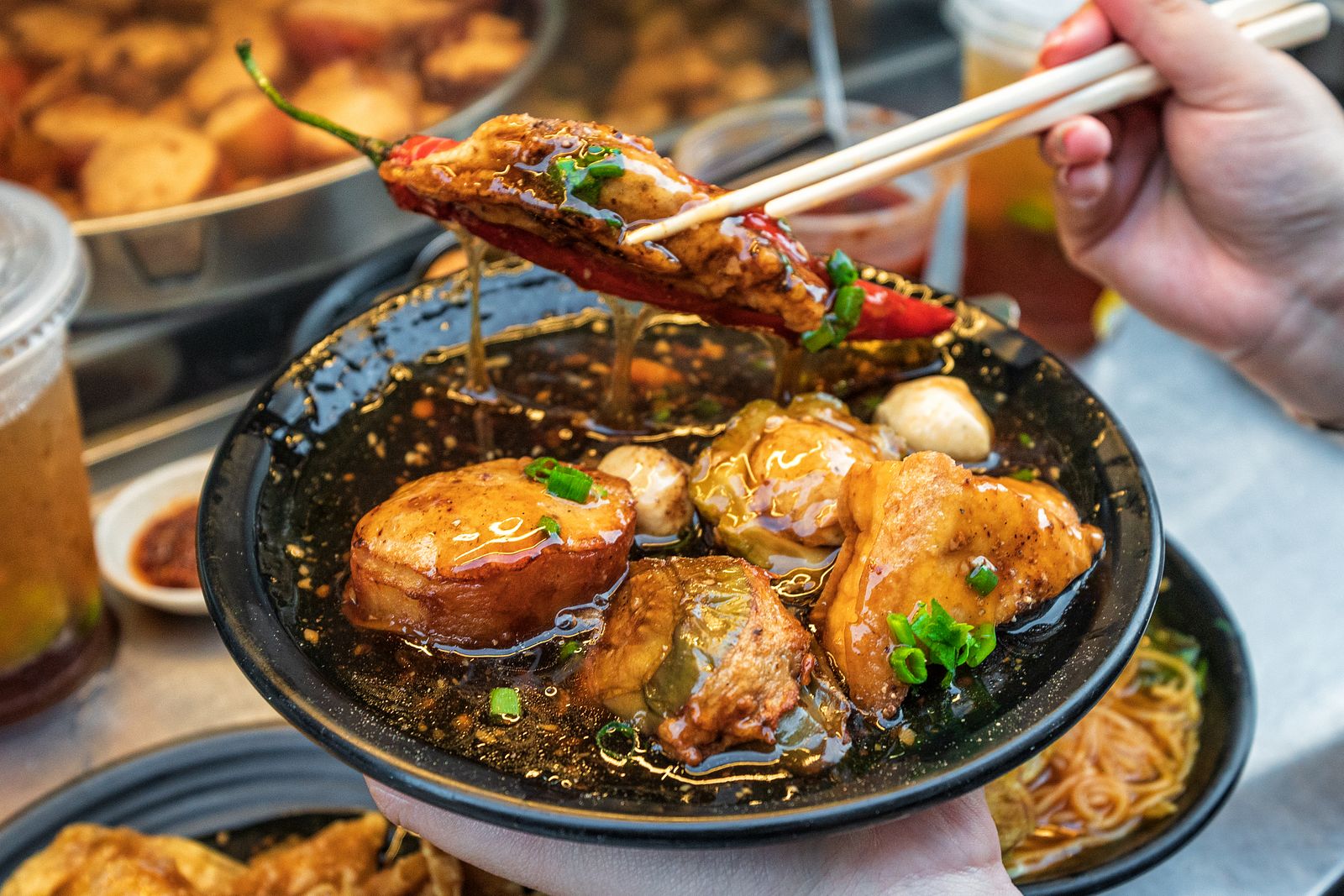
That special bite, for those who are curious, is known as the “Q” factor in Taiwan and “dai” in the Vietnamese language. The prized texture is featured everywhere in the continent’s cuisines, from Taiwanese boba and Vietnamese bò viên to Korean tteokbokki. Thankfully, thát lát thrives quite comfortably in fish farms, so we’re in for a lifetime of tasty chewiness. Outside of khổ qua cà ớt, fried cá thát lát is too a frequent topping in a number of Vietnamese noodle soups like bánh canh and and bún chả cá.
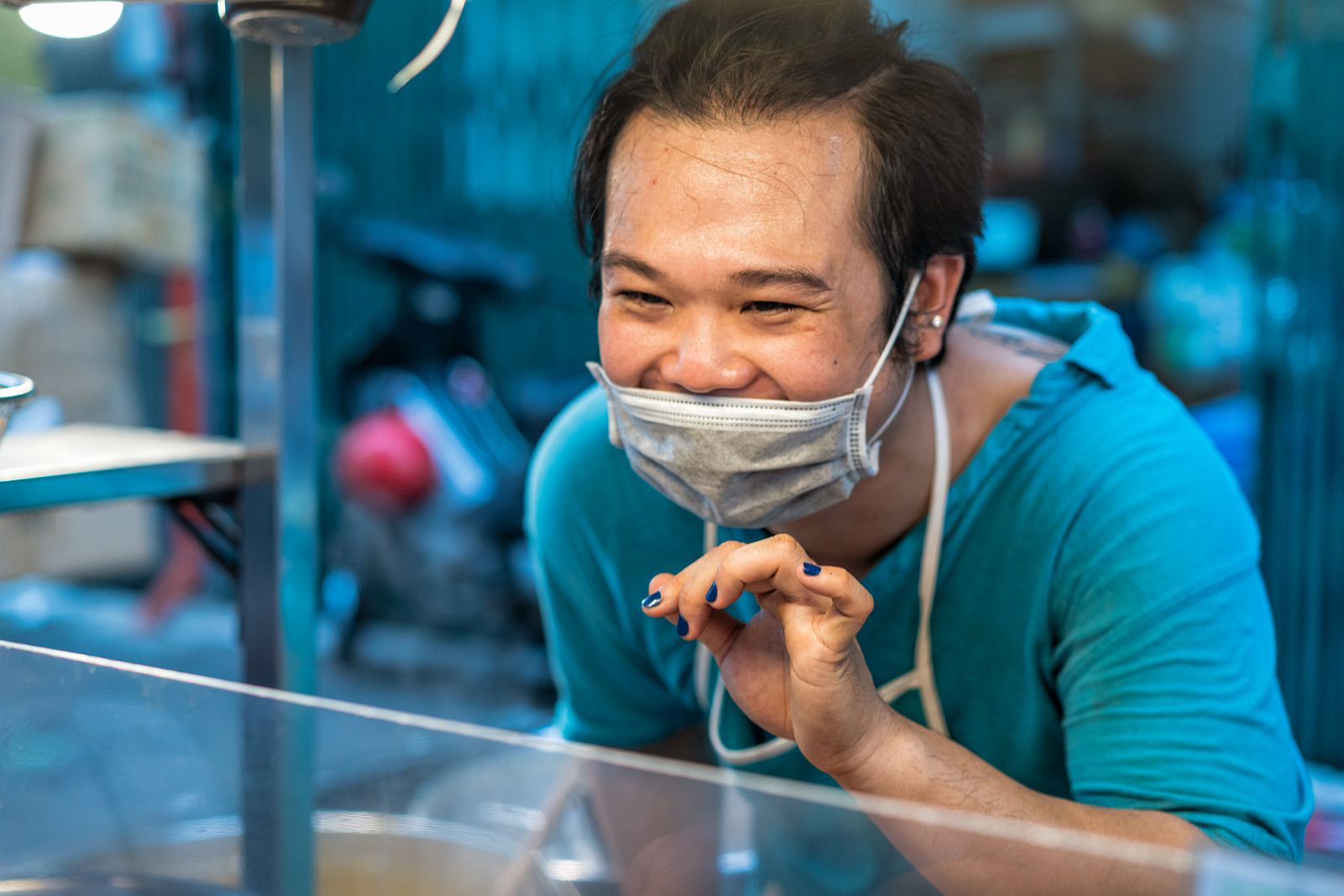
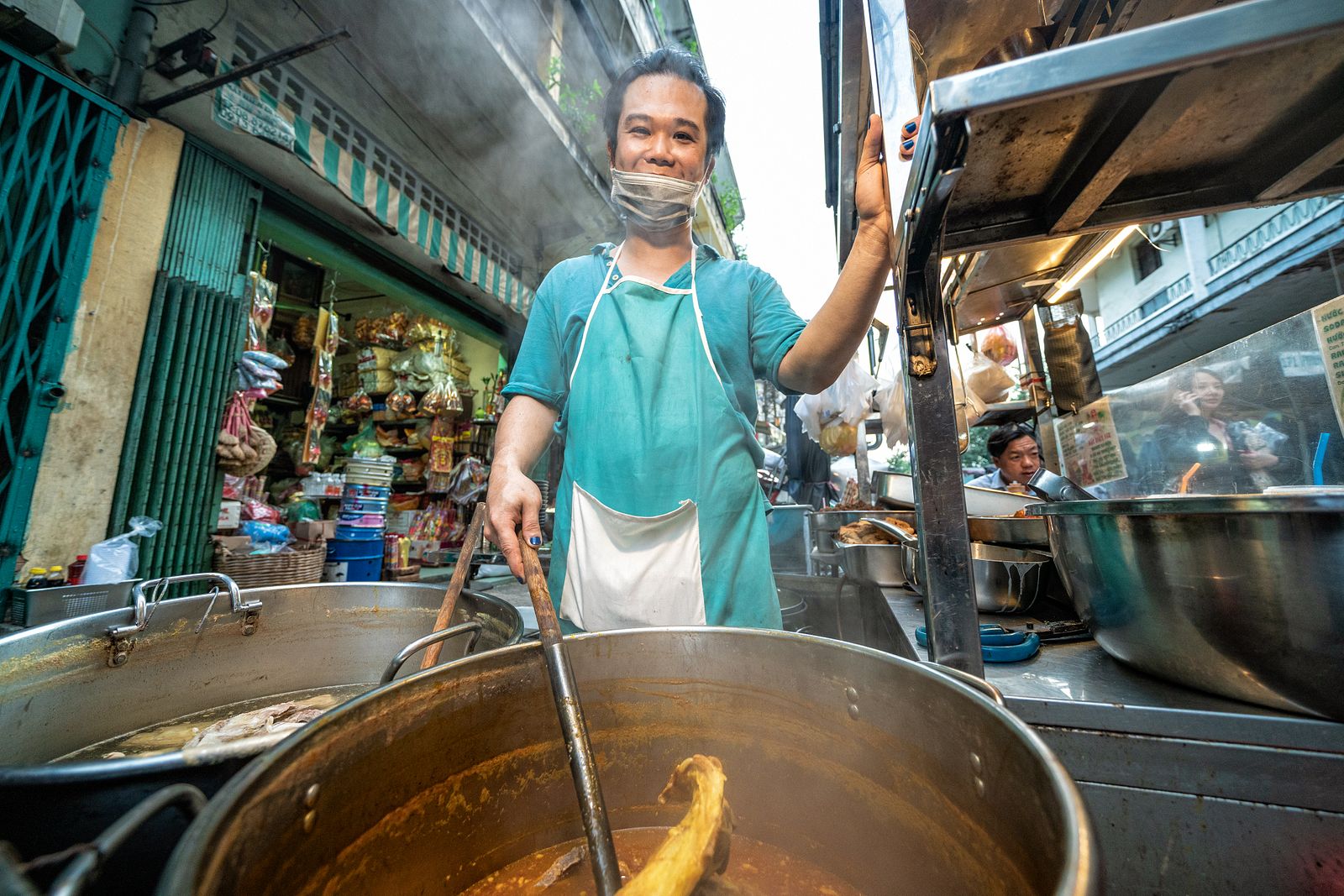
Khổ Qua Cà Chớn of District 5 fame is one of a handful of Saigon eateries where these morsels of fried vegetables are the vedette of the show, amongst other Chinese dishes. “Cà chớn” is a humorous insult-turned-term-of-endearment that’s equivalent to “rascal” in English. According to the owner, a self-proclaimed rascal, it doesn’t mean anything much other than a playful jab at himself. How he decides whether to open for business on a particular day is very much like how one decides to step out of bed with their left or right foot; that is, completely spontaneous and mood-dependent. I visited his khổ qua cà ớt cart twice in one week and was treated to delicious food both times; my photographer colleague’s three visits only yielded one meal. Cà chớn, indeed. Oh to be a fried vegetable hobbyist in this day and age, being able to turn up at work whenever you feel most passionate.
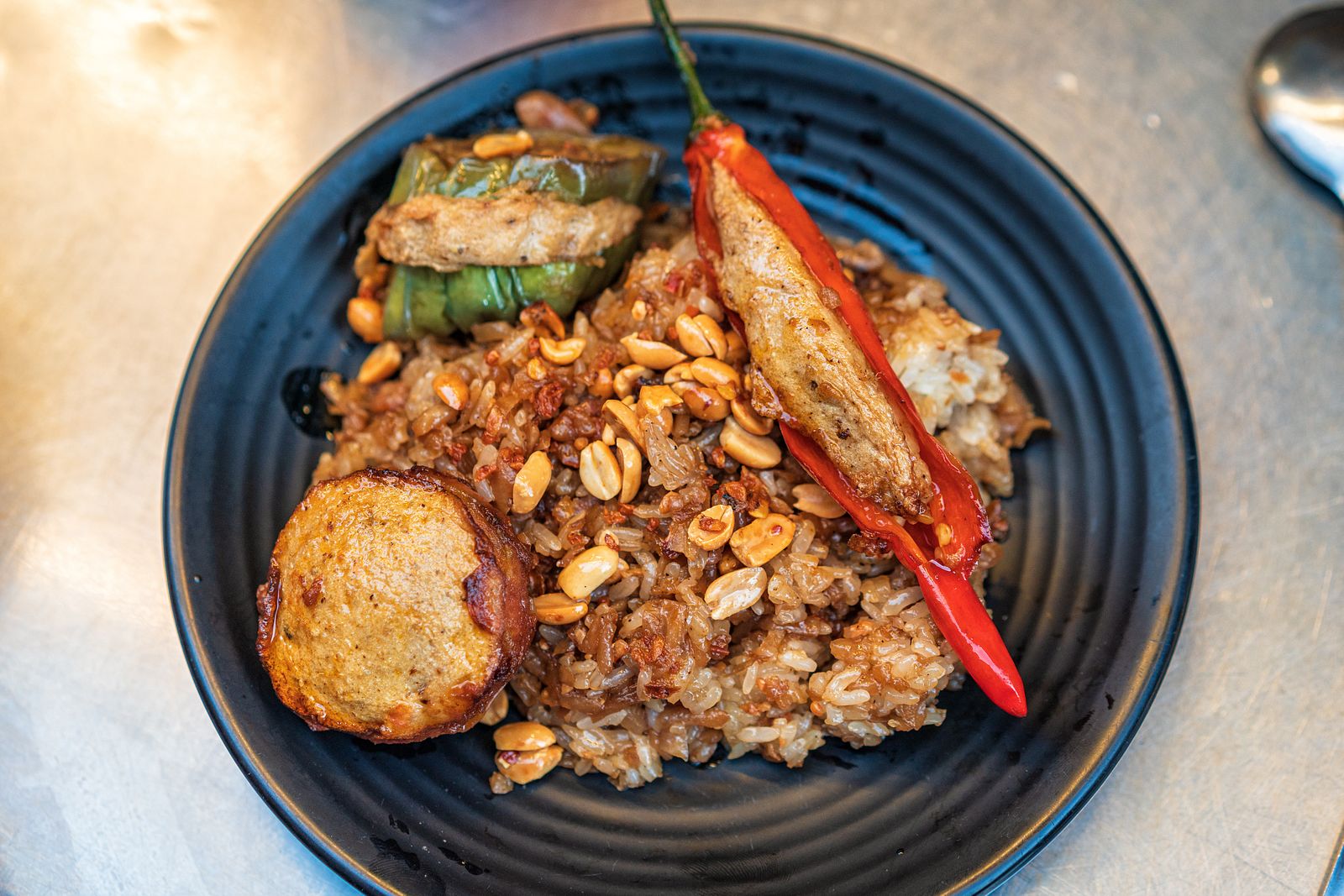
To make khổ qua cà ớt, the thát lát paste is stuffed into hollowed-out bitter gourds, chilies, fried tofu pieces, eggplants, tomatoes, amongst other cylindrical vegetables. Then, the stuffed pieces are fried until golden. Depending on personal taste, an assortment of fried morsels can be eaten as is, dipped in hoisin sauce and chili oil, or in a bowl with broth. Khổ Qua Cà Chớn also presents tasty-looking platters of soy sauce sticky rice, bánh khoai môn, and pork ribs soup with sheet noodles. My mixed vegetable bowl came with a big crimson chili, three chunks of bitter gourds, a triangle of fried tofu, an eggplant “sandwich,” and a tomato half all stuffed with cá thát lát, fried and submerged in the warm umami-laden broth. Soft vegetable, sweet hoisin, a zest of spicy chili oil — a hearty, Q-licious afternoon snack for thát lát lovers.
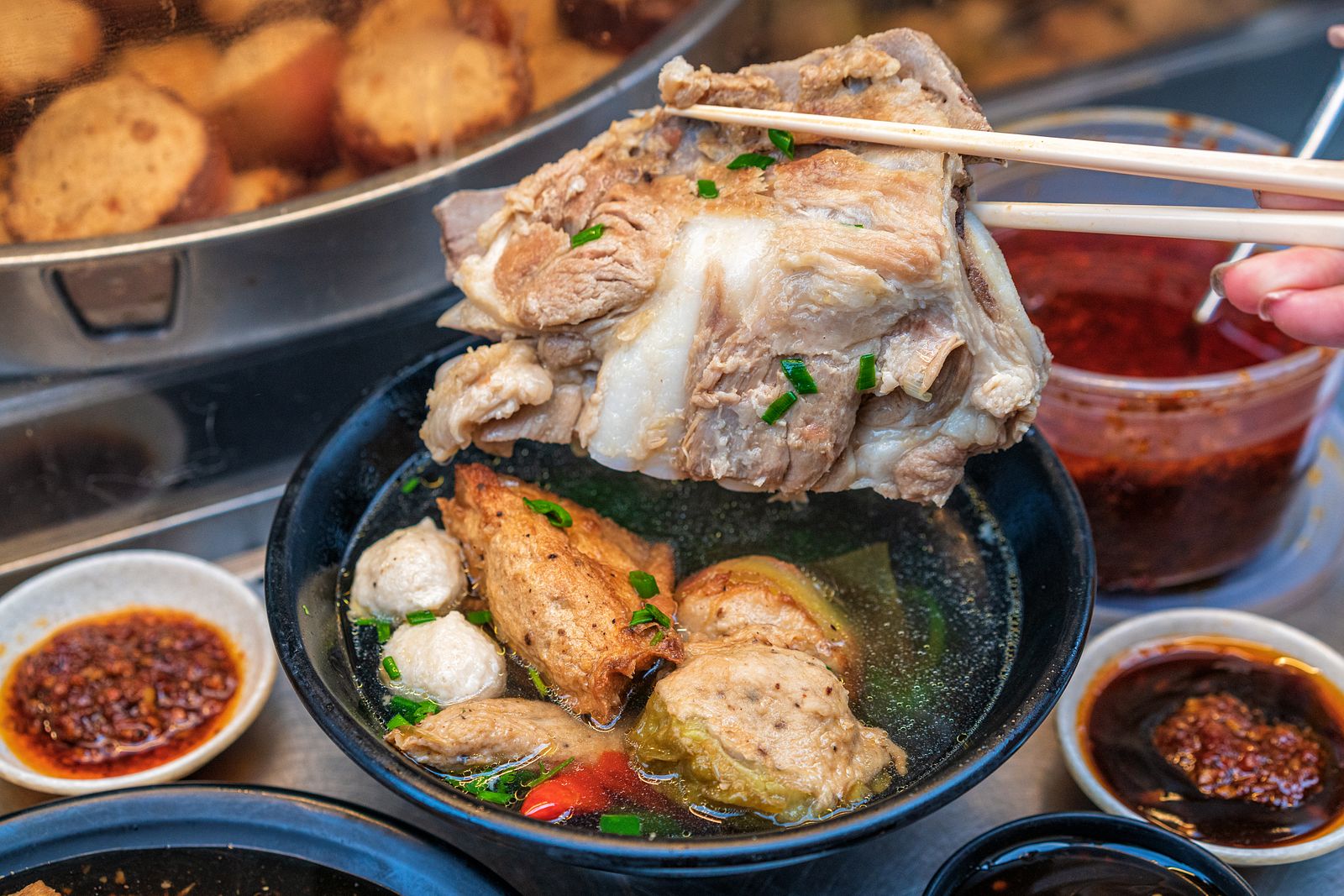
Upon digging into the clear broth, long-term residents of Singapore and Malaysia might find this setting familiar, because khổ qua cà ớt is the Hoa-Vietnamese localization of yong tau foo, a traditional Hakka dish popular across hawker centers in those two countries. Still, across the proverbial pond, these pieces of vegetables might be filled with a different mixture of fish flesh and mince pork instead of the chewy thát lát.
In a paper that examines the history of Hakka people in Vietnam, Nguyễn Văn Chính states that among Vietnam’s Hoa ethnic group, about one-tenth identify as Hakka and are referred to as người Hẹ, Hắc-cá or Khách. Hẹ is the most common term in Saigon and southern provinces, while the others are prevalent in northern localities. Academic sources on Chinese history chronicle the migration of Hẹ people to southern Vietnam during the second half of the 17th century. From 1889 to 1906, the southern half of the country became the new home of some 1.2 million Chinese immigrants. The group grew to 1.5 million by 1952, accounting for 6% of the general population. Among them, those speaking the Hakka dialect made up 11%, behind Guangdong and Teochew, but more than Fujian and Hainan.
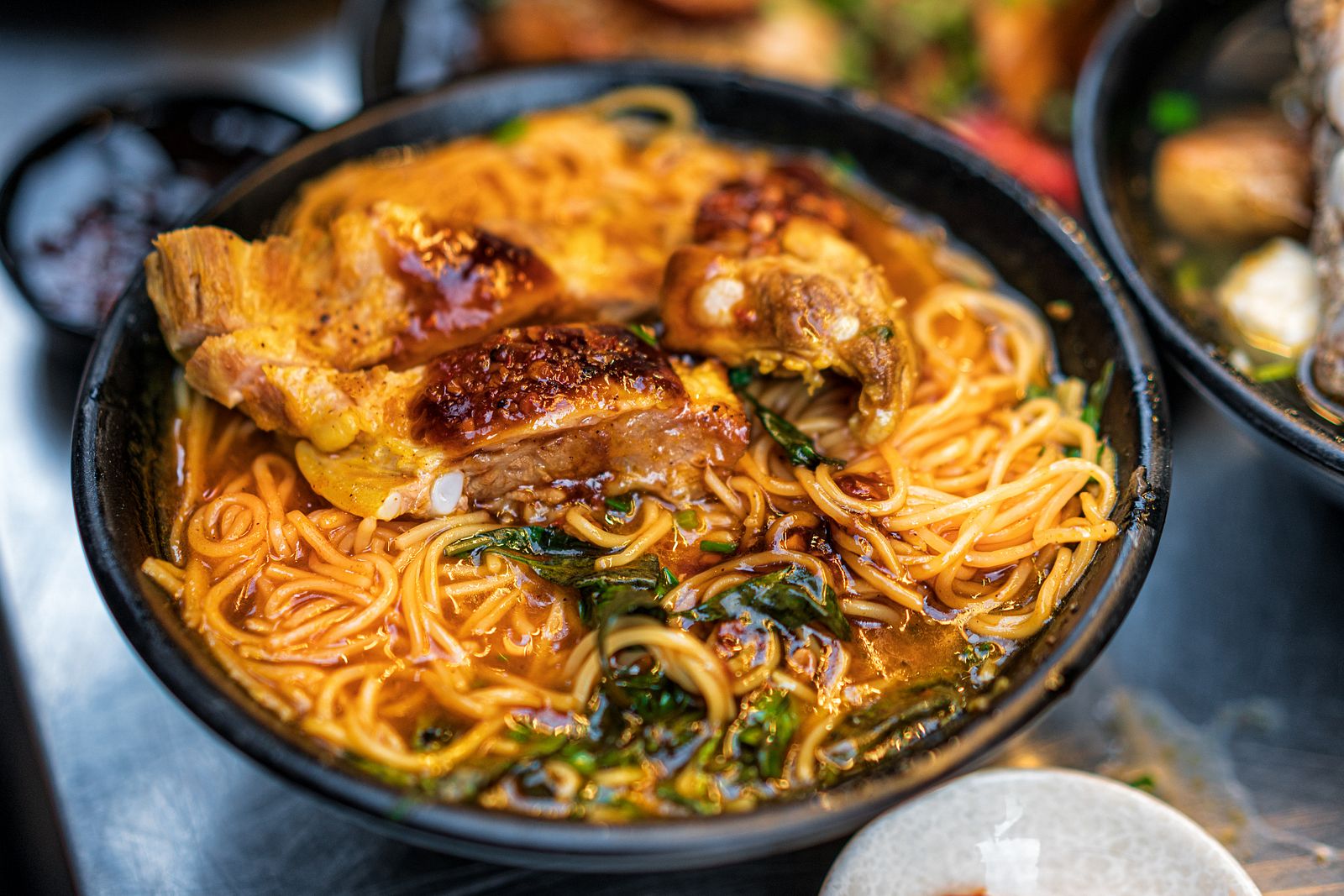
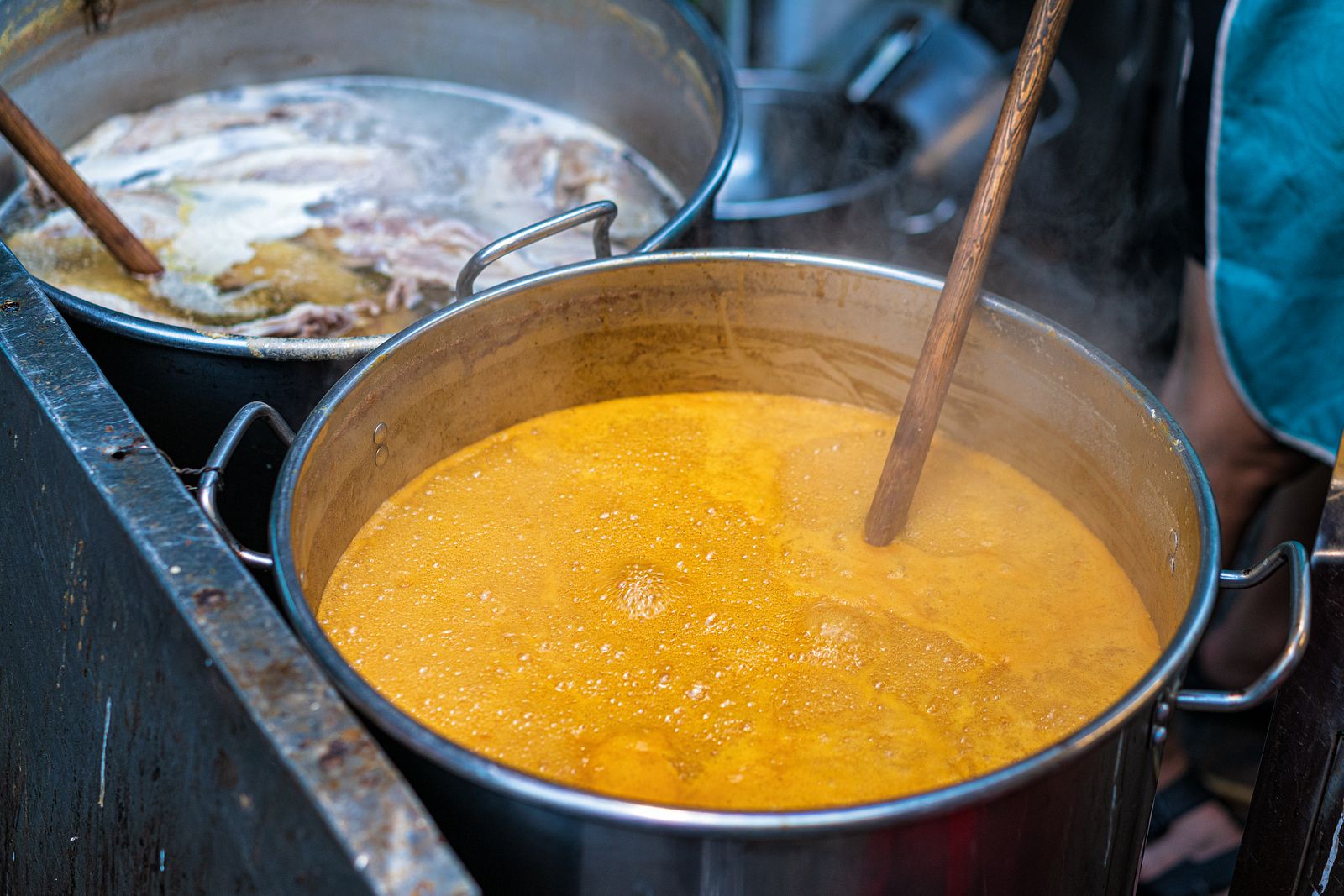
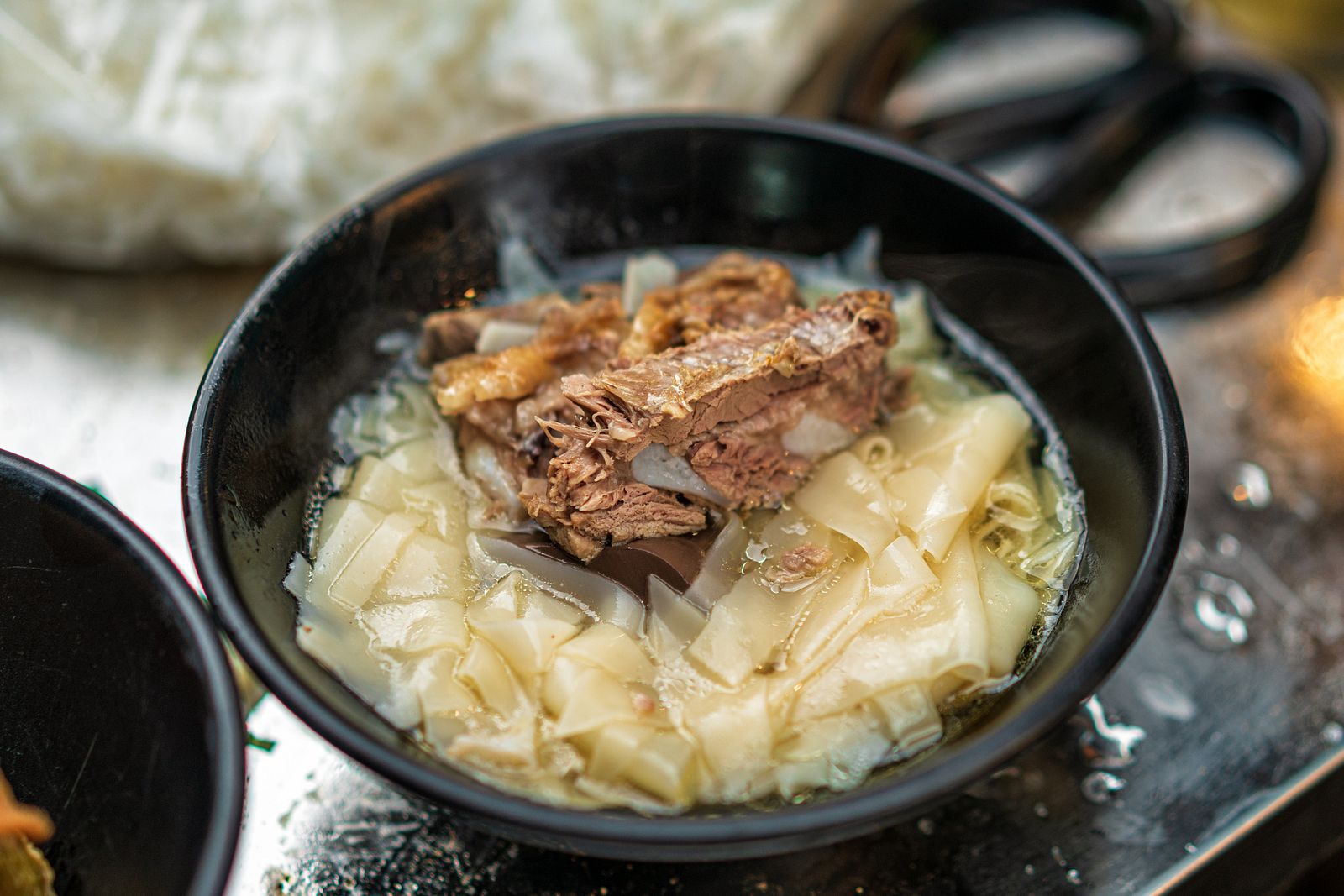
In Saigon, Hakka people were contractors, blacksmiths, stone carvers, maritime traders, and merchants trading tea and other small goods. They worshiped Thiên Hậu Thánh Mẫu (Tianhou), a sea goddess and patron deity for fishermen and seafarers — a natural fit considering the community’s intimate history and association with the ocean. Temples for Tianhou worship were constructed in southern towns with Hakka presence and used as venues for gatherings. Contemporary Saigon is still graced by the major Thien Hau Pagoda, one of the oldest of its kind, on Nguyen Trai Street.
How yong tau foo, and by extension, khổ qua cà ớt, came to be is still a subject for debate, though the prevailing theory surmises that it manifested from a dumpling replacement. Yong tau foo can be translated into “stuffed tofu,” the earliest ancestor of the khổ qua cà ớt family, though this progenitor has survived until today to be amongst its vegetable-enveloped offspring if my bowl of khổ qua cà ớt at Khổ Qua Cà Chớn is any indication.
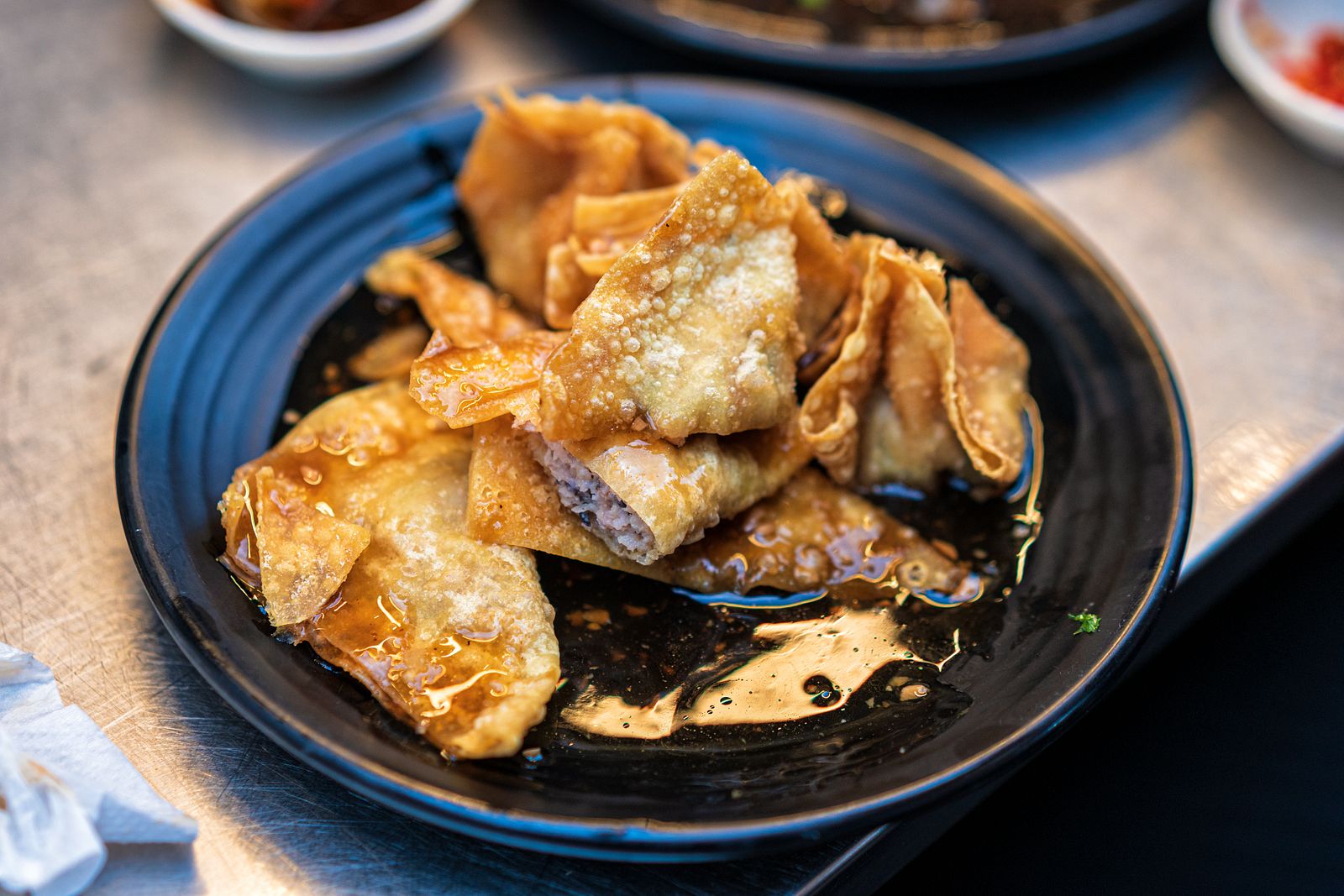
Research by Yang Liao and Shao Di He speculates that putting meat filling in tofu pieces was a way for Hakka migrants in southern China to simulate the dumplings of central China after they migrated southwards. Embedded in the creation of yong tau foo is the art of making tofu at home, and the pair believe that the tofu-crafting process embodied the crucial role of the familial bond of Hakka households.
“Making Hakka Yong Tau Foo [is] a recreation and collective action [that needed] to mobilize the members of [the] family to participate in making Hakka Yong Tau Foo,” they write. “This collective action creates a feeling of harmony to encourage more open communication and strengthening the sense of cohesion for Hakka [families]. Making Hakka Yong Tau Foo became a celebration and symbol of [the] Hakka family meal.”
I am quite certain that the folks at Phung Hung Street’s Khổ Qua Cà Chớn don’t go through the tribulation of making fresh tofu at home. Still, sitting at their cart making my way through the fried fish paste, I feel a convivial bond between the hawker and myself, and amongst us diners. The cart is a traditional hawker model that houses trays of prepped vegetables and the cooking area in the middle, and narrow counter areas around for eaters. You’re not meant to linger for after-meal beverages or desserts, but even during the short while when you’re slurping noodles there, in the middle of an open market, there’s a palpable feeling of home.
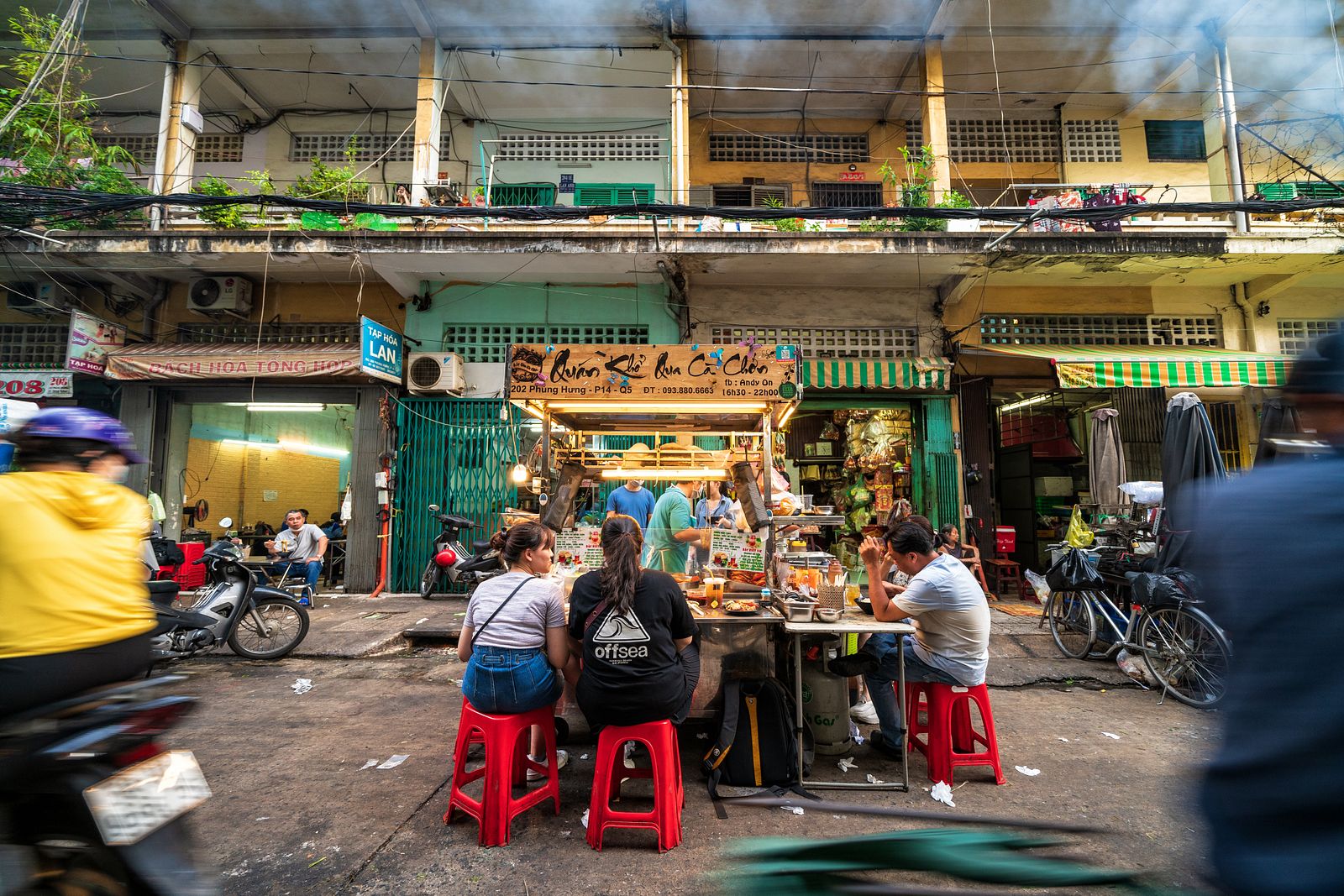
Khổ Qua Cà Chớn is open from 4pm on days that the owner feels like selling food.
To sum up:
Taste: 4/5
Price: 4/5
Atmosphere: 5/5
Friendliness: 5/5
Location: 4/5 — The cart is based in Chợ Phùng Hưng and could be easy to miss. Drive slowly.
Khoi loves cá thát lát, is a raging millennial and will write for food.
Khổ qua cà ớt
202 Phung Hung, Ward 14, D5


